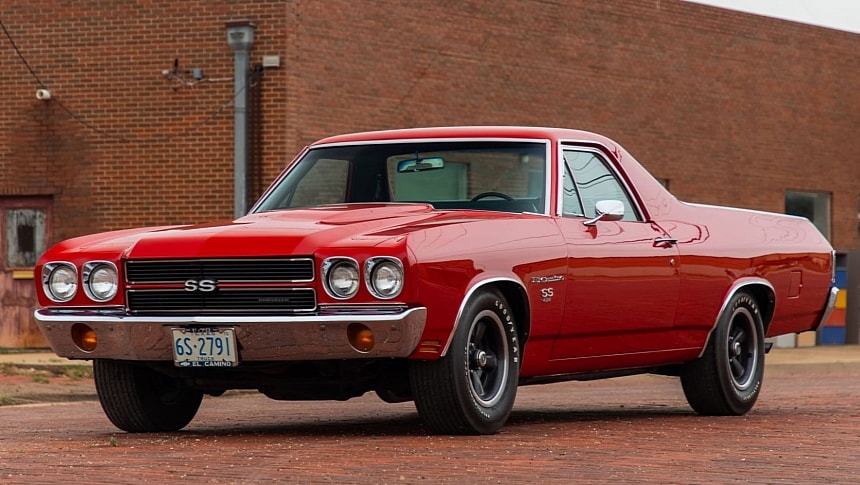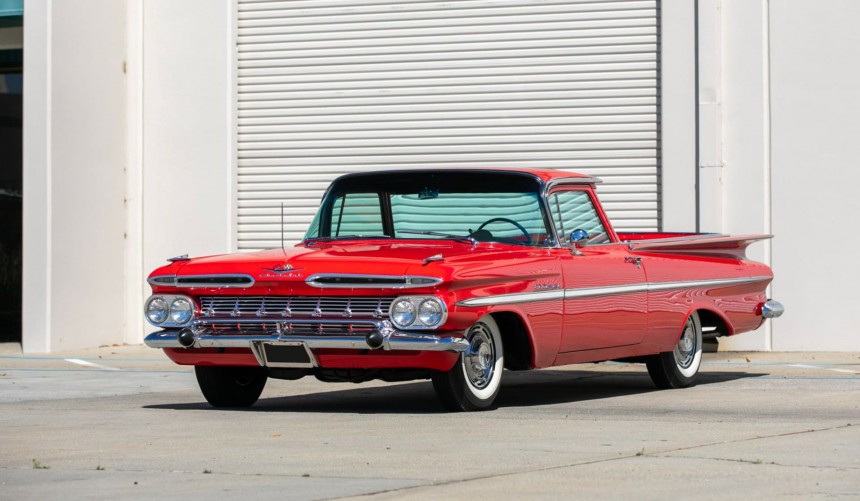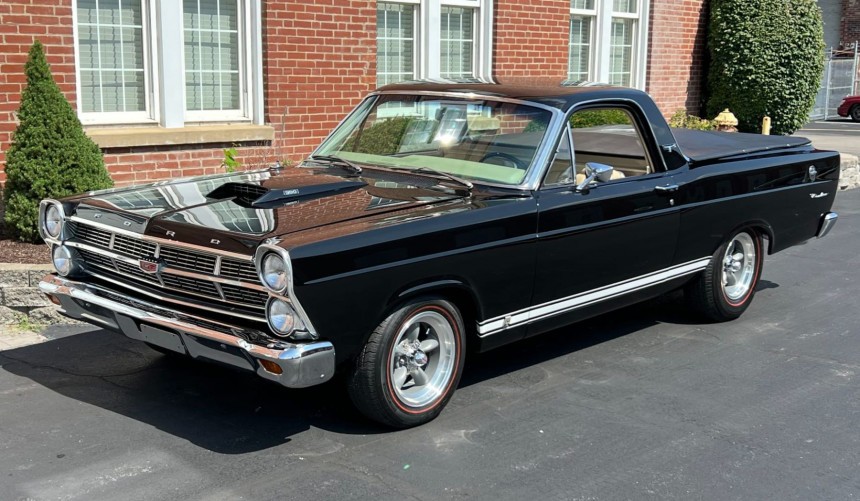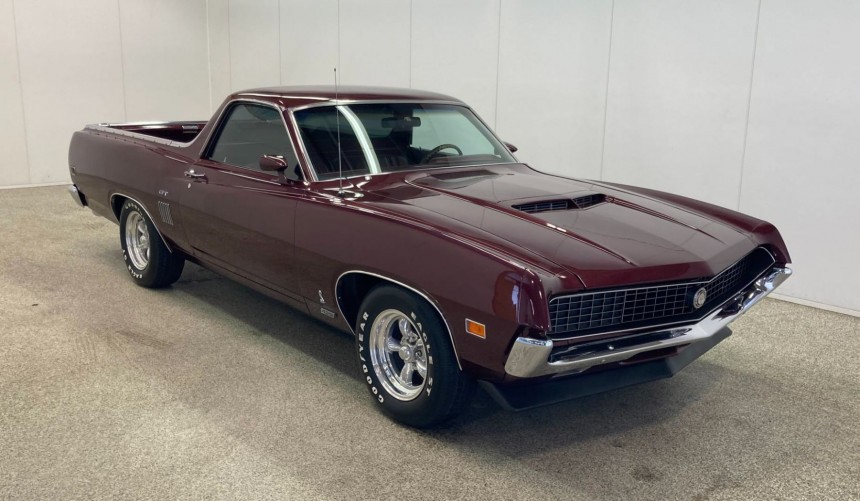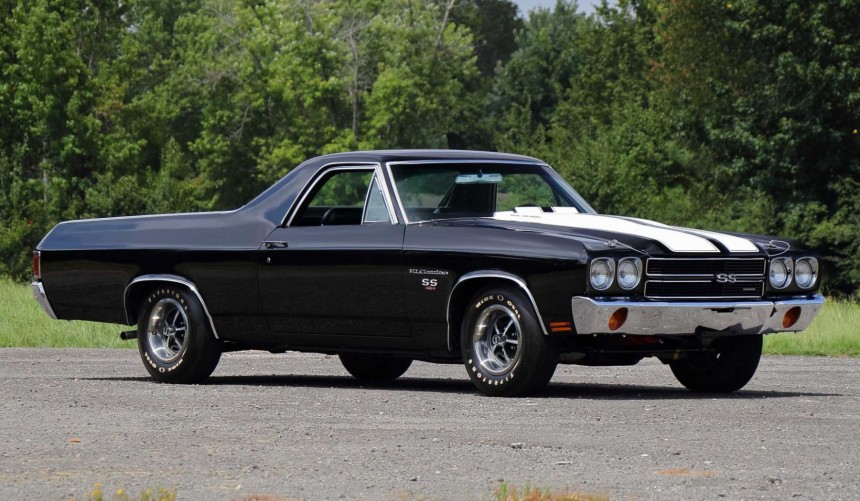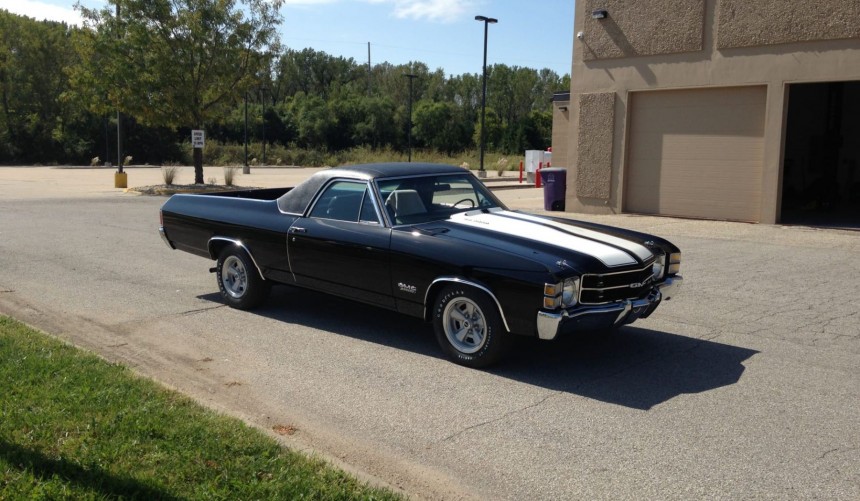Apart from coupes and convertibles, the muscle car era gave us some epic, passenger car-based pickups.
During the 1950s, speed-addicted car buyers became more and more interested in factory-built performance.
To oblige, American manufacturers started building increasingly powerful V8s and stuffed them in a wide range of vehicles.
By the mid-1960s, this trend became a priority for most brands, leading to many impressive muscle cars. By 1970, performance and variety had reached their respective peaks, but just a few years later, the mighty tire shredders were discontinued due to rising insurance rates and new government regulations.
During that short-lived yet exciting era, Ford and GM dared to apply the muscle car recipe to passenger car-based pickups (or UTEs, as they're called in Australia) as an answer for those who questioned whether to buy a high-performance coupe or a practical workhorse.
While that decision didn't break any sales records, it led to the creation of the wildest production cars to ever feature a cargo bed.
In 1957, Ford introduced the Ranch Wagon-based Ranchero pickup, which had no rivals for the next two years. That changed in 1959 when Chevrolet began producing the El Camino.
Like the Ranchero, the latest entry in Chevy's full-size lineup was based on a modified two-door station wagon platform borrowed from the Brookwood.
More modern and stylish than its Blue Oval rival, the first-gen El Camino was available with a high-performance engine, which the Ranchero lacked.
The motor in question was a 348-ci (5.7-liter) W-Series big block called Special Super Turbo-Thrust, and with it came several chassis improvements/
Equipped with a single four-barrel carb, it made 320 hp, but buyers could opt for the 335-hp triple two-barrel carb version (Tri-Power), which was the most potent.
While it can't be called a muscle car due to its full-size platform and pickup body, the 1959-1960 Chevrolet El Camino 348 Tri-Power certainly behaved like one.
Though it took a while, Ford finally introduced a high-performance Ranchero in 1966 as part of the one-year-only third-generation.
Built around a modified Falcon wagon chassis topped by a body that combined elements from both the five-door wagon and the two-door coupe, third-gen the Ranchero also received Fairlane trims later in the model year.
Unlike the previous generation, the new model was now available with an FE-series big block V8.
With a displacement of 390 ci (6.4 liters), the high-performance member of the FE family delivered 315 hp and transformed the Ranchero into a fearsome straight-line performer.
Extremely rare today, flawless 390-equipped Rancheros sell for around $25,000 these days, making the model an affordable and quirky alternative to 1960s muscle car icons.
For the epic 1970 model year, Ford unleashed the redesigned, second-generation Torino, meaning that the Ranchero was also redesigned.
With new Coke bottle styling and a larger wheelbase, the Ranchero was now more aggressive-looking than ever. It was also the first time the pickup could be equipped with the GT trim.
Going head-to-head against the El Camino once again, it was also more powerful than ever, thanks to the addition of the all-new Ram-Air 429 Cobra Jet and Super Cobra Jet V8s to its options list.
Displacing 7.0 liters, the powerhouse was rated at 370 hp in 715-cfm Rochester Quadrajet carburated CJ guise and 375 hp as the SCJ, courtesy of larger Holley 780-cfm.
The latter version also came with several unique upgrades, including four-bolt mains, forged pistons, and a hotter cam, which made it a better platform for aftermarket upgrades.
Unlike the 1966 model, the 1970 Ranchero GT is more valuable these days, with pristine examples demanding around $40,000.
In the Chevy camp, the 1970 model year meant that GM's self-imposed 400-ci (6.5-liter) ban on intermediates was finally lifted.
Therefore, the high-performance Chevelle and El Camino SS could now be unleashed on public roads with monstrous V8s.
The most powerful of the new over-400-ci units was a 454-ci (7.4-liter) big block available in two versions.
The first was the 360-hp LS5, while the second was the mighty 450-hp LS6, which was based on the same block but received an extensive list of upgrades.
While the 1970 Ranchero could compete with the LS5-powered El Camino SS, it was no match for its rival when the latter hid the LS6 under its hood.
Today, the 1970 Chevrolet El Camino SS 454 is the most sought-after pickup of the muscle car era, and since not many left the factory with the LS6, the value for an all-original surviving model exceeds $200,000.
Encouraged by the success of the El Camino, GMC decided to enter the passenger car-based pickup market in 1971 with the Sprint.
However, since it didn't produce a passenger car, the GM division borrowed the El Camino from Chevy and slapped its own badges on it.
Unlike other similar platform-sharing models from the era, like the Chevy Chevelle and Pontiac LeMans, for example, the 1971 El Camino and Sprint were the exact same car.
Consequently, the high-performance Sprint SP was a GMC-badged El Camino SS, so it came with the same engine lineup.
With the LS6 discontinued after the 1970 model year, the SP's top engine was the LS5 454 rated at 365 hp.
As you can imagine, GMC sold fewer SP 454s than Chevy did El Camino SS versions with the same engine, so finding an original, well-kept example these days is extremely hard.
To oblige, American manufacturers started building increasingly powerful V8s and stuffed them in a wide range of vehicles.
By the mid-1960s, this trend became a priority for most brands, leading to many impressive muscle cars. By 1970, performance and variety had reached their respective peaks, but just a few years later, the mighty tire shredders were discontinued due to rising insurance rates and new government regulations.
During that short-lived yet exciting era, Ford and GM dared to apply the muscle car recipe to passenger car-based pickups (or UTEs, as they're called in Australia) as an answer for those who questioned whether to buy a high-performance coupe or a practical workhorse.
While that decision didn't break any sales records, it led to the creation of the wildest production cars to ever feature a cargo bed.
1959 Chevrolet El Camino 348 Tri-Power
Like the Ranchero, the latest entry in Chevy's full-size lineup was based on a modified two-door station wagon platform borrowed from the Brookwood.
More modern and stylish than its Blue Oval rival, the first-gen El Camino was available with a high-performance engine, which the Ranchero lacked.
The motor in question was a 348-ci (5.7-liter) W-Series big block called Special Super Turbo-Thrust, and with it came several chassis improvements/
Equipped with a single four-barrel carb, it made 320 hp, but buyers could opt for the 335-hp triple two-barrel carb version (Tri-Power), which was the most potent.
While it can't be called a muscle car due to its full-size platform and pickup body, the 1959-1960 Chevrolet El Camino 348 Tri-Power certainly behaved like one.
1966 Ford Ranchero 390
Built around a modified Falcon wagon chassis topped by a body that combined elements from both the five-door wagon and the two-door coupe, third-gen the Ranchero also received Fairlane trims later in the model year.
Unlike the previous generation, the new model was now available with an FE-series big block V8.
With a displacement of 390 ci (6.4 liters), the high-performance member of the FE family delivered 315 hp and transformed the Ranchero into a fearsome straight-line performer.
Extremely rare today, flawless 390-equipped Rancheros sell for around $25,000 these days, making the model an affordable and quirky alternative to 1960s muscle car icons.
1970 Ford Ranchero GT 429 CJ/SCJ
With new Coke bottle styling and a larger wheelbase, the Ranchero was now more aggressive-looking than ever. It was also the first time the pickup could be equipped with the GT trim.
Going head-to-head against the El Camino once again, it was also more powerful than ever, thanks to the addition of the all-new Ram-Air 429 Cobra Jet and Super Cobra Jet V8s to its options list.
Displacing 7.0 liters, the powerhouse was rated at 370 hp in 715-cfm Rochester Quadrajet carburated CJ guise and 375 hp as the SCJ, courtesy of larger Holley 780-cfm.
The latter version also came with several unique upgrades, including four-bolt mains, forged pistons, and a hotter cam, which made it a better platform for aftermarket upgrades.
Unlike the 1966 model, the 1970 Ranchero GT is more valuable these days, with pristine examples demanding around $40,000.
1970 Chevrolet El Camino SS 454 LS6
Therefore, the high-performance Chevelle and El Camino SS could now be unleashed on public roads with monstrous V8s.
The most powerful of the new over-400-ci units was a 454-ci (7.4-liter) big block available in two versions.
The first was the 360-hp LS5, while the second was the mighty 450-hp LS6, which was based on the same block but received an extensive list of upgrades.
While the 1970 Ranchero could compete with the LS5-powered El Camino SS, it was no match for its rival when the latter hid the LS6 under its hood.
Today, the 1970 Chevrolet El Camino SS 454 is the most sought-after pickup of the muscle car era, and since not many left the factory with the LS6, the value for an all-original surviving model exceeds $200,000.
1971 GMC Sprint SP 454
However, since it didn't produce a passenger car, the GM division borrowed the El Camino from Chevy and slapped its own badges on it.
Unlike other similar platform-sharing models from the era, like the Chevy Chevelle and Pontiac LeMans, for example, the 1971 El Camino and Sprint were the exact same car.
Consequently, the high-performance Sprint SP was a GMC-badged El Camino SS, so it came with the same engine lineup.
With the LS6 discontinued after the 1970 model year, the SP's top engine was the LS5 454 rated at 365 hp.
As you can imagine, GMC sold fewer SP 454s than Chevy did El Camino SS versions with the same engine, so finding an original, well-kept example these days is extremely hard.
